Iain Treloar puts seven endurance road bikes through their paces, discovering that there’s a whole lot more to this exciting category than meets the eye.
The temperature is a scorching 42 degrees, and you’re already 80km away from home on a ride out to the middle of nowhere. Your legs are starting to feel heavy, filling with the burn of lactic acid on each nasty hill that rises up out of the dead, scarred road ahead. The frame beneath you is speckled with sweat; each pedal stroke takes you further into the unknown and closer to your physical and mental limit.
This is endurance road riding.
It used to be that road bikes were designed with speed as a single goal – which was fine for the racing cyclist but at times cripplingly uncomfortable for the everyday rider. Partially as a response to this, as well as pro riders seeking a slightly more forgiving ride for long days in the saddle, a formidable new category of road bikes emerged.
At first, these bikes involved a fairly straightforward tweak of race-bike geometry; a higher front end, shorter reach and longer wheelbase, with the idea being that a more upright riding position and increased stability would ease lower-back discomfort and create a more pleasant ride for those unaccustomed to the aggressive geometry of racing bikes.
These bikes are categorised by the bicycle industry as “endurance road bikes”. That term puts a racey spin on what could just as easily, and perhaps more accurately, be described as a ‘comfort road bike’ – but I suppose that wouldn’t sell nearly as well. Don’t fear, these bikes are suitable for a broad range of applications and however they may be labelled, they’re not just for those riding 200km at a time. They’re perfect for those with less back flexibility, and the slightly more upright front end lends itself to improved sight-lines in commuting use as well.
Other common features of the endurance road bike include sensible gearing – all seven bikes here feature a compact crankset (50/34t) and a broad range of gears at the rear (11-28t on all except for the Scott and Lynskey, which have 11-32t). Also commonly found are slightly wider tyres than a conventional road bike – generally 700x25C – which allow for lower pressures, improving grip and making for a slightly more forgiving ride.
As a category, the endurance road bike has seen continued growth and innovation, and rather than just being more approachable road bikes, there is now a bevy of innovative technology being applied to bikes of the style, and occasionally trickling up to the high-end, performance machines. Endurance road bikes are no longer tamed versions of their race-ready siblings, but a category where daring, exciting and forward-thinking ideas are executed, improving comfort and performance for a potentially vast number of road riders.
Testing rationale
More so than practically any other bike category, an endurance road bike lives and dies on the merits of its frame – their sole purpose for existing in the first place is to be comfortable, without unduly sacrificing speed and efficiency. In this sense, the components don’t matter all that much in the scheme of things.
To standardise the testing as much as reasonably possible and remove any potential confusion that could come from swapping between groupsets, we asked for each bike in this review to be equipped with the new (and fantastic) 11-speed Shimano Ultegra 6800.
Ultegra has always been very good, but the newest version of it is virtually indistinguishable from the top of the range Dura Ace and comes in at a much more affordable price. Other than appearance, prestige and a few hundred grams, there’s little to separate them, and for most riders it will be more than adequate. Cleverly, the cranks can accommodate a number of different sized chainrings, so you don’t need to get a completely new crankset if you prefer a traditional 53/39t up front. Ultegra’s braking is significantly improved (Shimano claim a completely believable 10% increase in power) and the shifting is lighter, with less lever travel before engagement than the old version. My only criticism of the shifting – and it’s a relatively minor one – is that the half-shift (where you can trim the front derailleur across to access gears at the extremes of the cassette) is harder to find. Otherwise, it was a privilege to ride seven bikes equipped with this groupset.
With the groupset, crank length and gear ratios mimicked across all bikes tested, I was able to concentrate on what’s most important – the frame’s character, and how the bike actually rides. Understandably for the category, the assessment of these bikes slightly prioritises their success at eliminating road-buzz and vibration, as that will be key in most consumers’ purchase decision. Other factors, including wheel and contact point selection, have an important but lesser impact on ride quality, so the merits or otherwise of these will be addressed. But we’re comparing apples with apples, and as such these reviews can be considered as the closest direct comparative test possible of seven current endurance road models available to Australian riders.
Trek Domane 5.2
$3,799 / www.trekbikes.com
Function 38/40
Quality 37/40
Price 9/10
Appearance 8/10
92% – Best in Test
Where many endurance bikes have a background as tamed race bikes, the Domane boasts a pure race heritage – Trek developed it with Fabian Cancellara as his bike for the long, demanding cobbled classics, before adding it to their range alongside the racier Madone. The most distinctive feature, and greatest success, of the Domane is what happens at the junction of the seat- and top-tubes; they’re not connected. Instead, you get what Trek call an IsoSpeed decoupler – an integrated pair of cartridge bearings and a pivot point, allowing fore-aft sway in the seat-tube. It’s an ingenious design and works astonishingly well, making for the most comfortable rear end of any road bike we’ve tested.
The cobbled origins of the Domane give a hint as to the terrain the Isospeed works best in; the hard, sharp shocks of large ruts in the road are absorbed with ease, and whilst you’ll still know that you’ve hit a bump, it enables you to stay in the saddle and continue pedalling where on other bikes you may be bounced off your perch. At first, it’s great, but over a long ride it’s outstanding; the road’s larger imperfections are smoothed, and it becomes a much less full-bodied exercise not constantly supporting yourself out of the saddle. Over 100km +, the benefits of the Domane’s cushy rear end really add up. When putting the power down at higher cadences, there’s a little bit of bounce which is initially disorienting, but it’s a worthwhile trade-off and quickly stops being bothersome. Paired with the stiff, broad bottom bracket area, it’s easy to see why the Domane is Cancellara’s go-to race machine – it’s firm under acceleration, whilst soaking up the really rough stuff better than any of its competitors.
The remarkably absorbent back half of the bike can’t possibly be matched up the front, although it’s not bad there either. Without access to a fancy pivot point, the fork does its best to soak up hits from the road, with a large amount of sweep and dropouts positioned at the rear. This keeps the wheelbase relatively tight, improving handling precision and allowing for slightly more give, but does make for a slightly binary ride quality, with the front end appreciably more jarring than the rear. However, any disappointment here is tempered by remembering that the back half is so remarkable that any road bike innovation in existence would feel harsher alongside it.
The 5.2 tested is in the middle of the range, and at $3,799 is competitively priced; for those on a budget, the lower-grade 4.7 ($3,099) swaps the distinctive seat-mast for a more traditional post also features Ultegra. If we’d tested that, it may well have won the ‘Best Value’ commendation too.
Lynskey R255
$4,999 as tested / www.bikepro.com.au
Function – 37/40
Quality – 36/40
Price – 8/10
Appearance – 9/10
90%
The only non-carbon bike on test is this titanium beauty. Lynskey is a name with a long association with this most prestigious metal – the Lynskey family founded the revered Litespeed in the mid-‘80s, before forging a new path under their own brand name. All their immaculately welded frames continue to be made in Tennesee, and the R255 is nicely detailed with gorgeous rear drop-outs, an etched clover on the rear brake bridge and a lovely headbadge. I wish the branding was etched as well – the white decals look a little budget – but that aside, it’s a stunner.
Compared to the stock bikes elsewhere in this review, the Lynskey is sold as a frame and specced up to your preference by local distributor, BikePro. There’s a lot to be said for this process. It lets you set the bike up – stem length, bar width, etc. – exactly how you would prefer. The build BikePro provided for us was fairly high-end for its $4,999 asking price, with classy inclusions like a Chris King headset and Thomson seatpost; the only thing I’d change would be to add a full-carbon fork, rather than the alloy-steerer model included here.
The R255 is one of the more traditional looking frames in Lynskey’s road range, with unshaped, triple-butted round tubing and a sloping top-tube. It’s billed as their ‘do-everything’ road frame, with clearance for tyres up to 700x28C and a relaxed but sporty character. It lives up to that billing, although the skinny tubing makes it look sedate alongside the oversized, beefy carbon frames it was tested against.
I was expecting to jump on the Lynskey and find it mannered and a little conservative. Not even close. I love the way titanium rides, and the R255 is a superb example of what can be achieved with this material. Although it can’t possibly be as good at absorbing large bumps as a bike with a pivoting seat-tube, titanium has a lovely, lively ride with just a hint of spring to it that’s more engaging than carbon, and feels less disposable.
The hidden strength of the R255 is its marvelous handling. There are a number of factors that combine to make up a bike’s handling characteristics – the geometry, wheels and tyres all have their part to play – and the way they combined on the Lynskey was impossible to fault. On sharp 90 degree corners at speed, the R255 carved a line so tight I half expected carnage, but at no point felt anything other than perfectly balanced and controlled. For a bike that’s sold as a relaxed, sportive-ready all-day ride, it handles with a low-slung, joyful precision that completely shatters expectations.
The wheelset deserves a special mention. A custom option built in-house by BikePro, their traditional appearance disguises a sub-1,500g, stiff and durable wheelset that’s more than most riders will ever need. Mating Pacenti rims to hubs of BikePro’s own design – the freehub on the rear is satisfyingly noisy, if that’s your thing – they’re well worth bypassing the big brands for.
Bianchi Infinito CV
$5,499 / www.solasport.com.au
Function –38/40
Quality – 37/40
Price – 6/10
Appearance – 9/10
90%
There are few brands with a heritage to match Bianchi – they’re the oldest continuously trading bike manufacturer in existence, and in their trademark celeste colouring, are instantly identifiable in any bunch.
The Infinito CV is a new version of their highly-regarded endurance geometry road bike, featuring a new carbon fibre layup and some innovative new technology. The CV stands for ‘Countervail’, and it’s effectively a vibration cancelling material that is placed at key points in the frame to soak road buzz and reduce its transmission through to the rider. Bianchi make some ambitious claims about their Countervail, asserting that there’s up to 75% less vibration going through to the rider with this treatment. Understandably, we were excited to see if the reality was as good as the marketing hype.
Coming off the Trek Domane and expecting a super-cushy ride, my first impression was of mild disappointment. As time went on, I realised the wrong-headedness of this gut reaction. You see, it’s important to qualify what type of vibration the Infinito CV excels at dampening. The Domane is superb at handling the big hits, where the Infinito CV is the master at soaking up niggling, high-frequency vibration from the road. They’re two different approaches which are both excellent at what they do, but they’re solving two different problems. The Infinito CV arguably has the broader appeal – there are more bad roads than really bad roads. On a buzzy, but not awful, surface like Melbourne’s Yarra Boulevard, the Infinito CV came into its own and cancelled the little niggles, leaving me feeling fresher after a few laps than I otherwise would be. Even after several hours on the Infinito, there wasn’t even a hint of lower-back discomfort or undue fatigue.
I didn’t like the execution of the Infinito’s internal cabling, which is routed in such a way that there’s a fair bit of rattle at the front end on rougher roads; it tricks the mind into undervaluing the absorbing properties of the frame, because it sounds like it’s transmitting more vibration than it actually is.
The Bianchi felt the raciest of the bikes on test, with the shortest headtube and lowest front end, which helped highlight its handling characteristics. ‘Nimble’ isn’t a word you’d often associate with bikes of this category, but is an excellent descriptor here.
The very capable Fulcrum Racing 5 wheels and colour-matched Fizik and FSA components round out a high-quality build. However, at $5,499 for its base-level Ultegra build, it’s the priciest bike on test, and a couple of grand more than many of its direct rivals. Smart innovation comes at a premium, and whether it’s worth it to you is an argument to have with your bank account. If I was in the market, however, I’d take a really close look at the Infinito CV.
Giant Defy Advanced 1
$3,199 / www.giant-bicycles.com/en-AU
Function – 33/40
Quality – 34/40
Price – 9.5/10
Appearance – 7/10
83.5% – Best Value
There are few brands to have revolutionised the bicycle industry quite like Taiwan’s Giant. From humble beginnings, they’ve grown into the biggest manufacturer in the world. They produce bikes that have pushed boundaries, like the TCR that trailblazed the now-standard compact geometry, and have done so on a scale that allows them to be one of the great value propositions of the market.
The Defy takes the TCR as its basis, stretching the wheelbase slightly, shortening the top tube and adding a couple of centimetres to the headtube. Like Trek’s Domane, it’s a bike that is extensively used in the longer, rougher one-day races on the European cycling calendar, finishing second in last year’s Paris Roubaix.
The Defy forgoes decouplers or elastomers to smooth its ride, and is for the most part an endurance bike by geometry rather than technology. That’s both good and bad. The more upright geometry of the Defy is a back-saver for less flexible riders, enabling an all-day riding position, but there’s less compliance through the frame. Of the seven equivalently sized bikes tested here, the Defy’s whopping 19cm headtube was the longest, putting me in a more upright position than I prefer even with the stem slammed down the steerer. With the front end up as high as it was, the Defy didn’t feel particularly zippy. That’s mostly an illusion; there was no appreciable drop in average speed over my favourite test routes.
Once I’d adapted to the upright geometry, the Defy started to reveal its quiet pleasures. There’s a certain fuss-free quality to the ride of this bike – not found through the bump- and buzz-killing efficiency of some of the other bikes, but in the polite way that it allows you ride for a few hours without anything in particular drawing attention to itself. Again, good and bad – I couldn’t truthfully characterise it as hugely exciting, but it’s trouble-free, reliable and stable. The frame doesn’t sacrifice much that you’re putting in, and with the upright position you can shift down into an easier gear on long climbs, isolate your lower body and comfortably spin your way up to the top from the saddle, without being stretched out and down.
Finishing kit on the Defy is mostly Giant’s own in-house componentry. Although lacking a little in prestige, it’s good stuff – titanium bolts on the stem are a nice, rust-proof inclusion, and the wheels, with DT-Swiss made hubs, are smooth and sturdy.
The Gulf Oil GT40-aping colour-scheme of this model is polarising. I’m on the fence – I think the colours are great, but the graffiti-like graphics on the top tube will quickly date. That said, the appearance of the Defy is the least sensible thing about this very sensible bike, and in just about every other respect, it’s a reliable bike for the everyday rider. A bike purchase is a battle between head and heart, and what the Defy lacks in thrills it more than makes up for in its broad appeal, attainable price-tag and fuss-free refinement.
Scott Solace 20 Compact
$3,899 / www.sheppardcycles.com
Function – 34/40
Quality – 32/40
Price – 7.5/10
Appearance – 7.5/10
82%
Piloted to some famous victories by the riders of Orica-GreenEDGE, the Swiss brand Scott has a special place in the hearts of many Australian cycling fans. Scott has always pushed the boundaries at the race end of the spectrum, with super light, super stiff frames, and the Solace is their brand new attempt at the endurance road bike category.
Fittingly, they’ve not gone about it by following the status quo. At the heart of this bike is what they call a Two Zone concept. Imagine drawing a diagonal line from the top of the headtube to the rear dropouts. Everything above that line – the ‘Comfort Zone’ – is best placed to handling shock-absorption. Everything below it – the ‘Power Zone’ – is designed to maximise efficiency, limiting flex in the bottom bracket and headtube.
That makes sense, but the way that Scott has tackled this concept is striking. The rear brake is hidden away down behind the bottom bracket, and there’s no bridge connecting the seat stays. It’s not a new concept – it was tried on early mountain bikes (for mud clearance), is widespread on time trial bikes and is used by Trek on their higher-end Madones (for weight savings and aerodynamic advantage). Scott’s approach optimises the seat stays and lack of brake bridge for compliance through the back of the frame.
If it’s a little surprising to look at, it’s a little scary to get your mitts around. Squeezing the seat-stays together with one hand shows just how much give Scott built into the frame; the seat stays flex almost 10mm each way, leaving you heart-in-mouth wondering whether you’re about to cause fatal damage to almost $4,000 of road bike. You don’t, of course, and when you’re out riding on the Solace you’re impressed at what those clever Swiss engineers cooked up, because it works a treat.
The highly absorbent seat-stays pair with a skinny 27.2mm seatpost, which further takes the sting out of road (skinny posts flex more than fat ones). In vibration absorbance, it’s well-rounded – not as assured on big hits as the Domane (nothing is) and not as good at soaking up buzz as the Infinito CV, but a very capable middle-ground.
The Power Zone is – mostly – a success, too. The broad downtube flattens out to a wide bottom bracket, and when stomping down on the pedals there’s no hint of flex, pushing the bike forward with great efficiency. But whilst it works well in and of itself, there are some minor flaws to be found when you add a drivetrain to the mix. There’s a chain-catcher fitted, but the chain still found a way to derail into the frame on a down-shift. Furthermore, in the biggest couple of gears, the upward-curving chain-stays bring the chain perilously close, leading to a surprising amount of chain-slap.
Lapierre Sensium 400
$4,199 / www.lapierrebikes.com.au
Function 33.5/40
Quality 31/40
Price 6.5/10
Appearance 9/10
80%
Lapierre bikes are a fairly uncommon sight in Australia, but they’ve got a heritage stretching back over 60 years in their native France. They’re best known as the bike supplier of FdJ, and as a teenaged fan guided into a love of cycling by the July exploits of Brad McGee and Baden Cooke, I always had a bit of a soft spot for the brand.
Their endurance bike, the Sensium 400, comes in a striking matte white and black colour scheme, with a super glossy yellow section extending from the bottom bracket along the chain stays. The finish is excellent – apart from some slightly sloppy paintwork under the bidon bolts – and the internal cable routing is super tidy, and buzz-free.
Although the frame’s angles are fairly relaxed, there’s little that screams ‘endurance’ about the look of the Sensium; its head tube length is middle of the pack, and there’s still a reasonable drop from the seat to the bars. For me, this felt like a nice middle-ground from the outset. That said, if you’re after a very upright position, the front of the Sensium may yet sit a little low.
Last year’s Sensium was touted as a visionary advance in comfort, by virtue of an elastomer ‘Eraser’ built into the seatstays. For reasons unspecified, that’s gone for 2014, leaving the Sensium a comfort road bike that’s had its most obvious selling-point taken away from it. We didn’t get a chance to ride the Eraser variant, but found the ride quality of the Sensium to skew a little more than expected toward ‘race’ rather than ‘endurance’. That glossy yellow bottom bracket area stubbornly resisted undue flex under hard acceleration, and whilst it would be at the comfortable end of the spectrum for a race bike, it lacked in forgiveness compared to the top performers in this test. Part of the blame for this needs to go to the narrow, unyielding Selle Italia X1 saddle mounted on a Ritchey alloy seatpost. When we swapped both of these out, comfort went up and weight went down, and it’s a great place to start the upgrades.
The next obvious change to make is the wheelset. Mavic’s entry-level Aksium is reliable but weighty, and seeing as this bike comes in at $4,199 it’s not that impressive an inclusion for the price.
So with a couple of likely upgrades on the horizon, and a middling price-tag, the question is whether the Sensium is worth the hassle. The answer for me is a tentative ‘yes’. It’s quite light at a claimed 7.7kg – and trust me, you could lose half a kilo of that pretty easily – as well as lively, good-looking and relatively nimble. However, it’s a fence-sitter, never completely committing to the category it’s ostensibly a part of, and despite its many merits that’s not quite enough to make it an unqualified success.
Avanti Cadent ER2 3.0
$3,249 / www.sheppardcycles.com
Function 31/40
Quality 32/40
Price 8.5/10
Appearance 8.5/10
80%
The closest thing to a hometown hero in this test, New Zealand brand Avanti have made great strides to increasing their prestige over the past few years, investing heavily in new technology and releasing some truly top-notch bikes.
In a stealthy, slightly-grainy-to-the-touch matte black, blue and white, the Avanti Cadent ER2 3.0 is a speedy looking bike. The nice finish of the frame extends to the finishing kit, in large part supplied by Avanti’s own in-house brand, Zero. The stem, carbon seatpost, bar and saddle are all good-lookers, with flashes of white that elevate them above the normally generic level of own-brand parts in a very nice, albeit 3T-derivative, way. Even the bartape – perforated faux leather with blue highlights, finished with a metallic blue expandable end cap – was thoughtfully executed. It’s the little things that count, right?
All that would come to nought if the bike didn’t ride well, but luckily Avanti have done their homework here too. For the style, the Cadent has quite a direct ride. With a press fit BB86 bottom bracket, power transfer is both direct and instant. Early impressions were that the bike was a little rough in its shock absorption, but it was more a matter of learning how to adapt to its quirks. If you trust in the stable handling of the Cadent and lightly unweight the front end of the bike, it cruises over rougher terrain, changing the character of the bike markedly. The rear proved relatively effective at absorbing vibration, with the slender seat stays providing a fair degree of comfort, without being class-leading.
However, it wasn’t all peaches and cream. I found the Cadent’s sizing to be a little off. The medium/large sized bike we had was a 56.5cm effective top tube, towards the longer end of the bikes on test. Oddly enough, however, it felt the smallest. The lever’s position on the bars is a likely culprit, as they were installed high on the curve of the bar, reducing the effective reach to the levers and making for an awkward, cramped cockpit. Reach from the tip of the saddle to the bar was a full two centimetres less than on my own bike, which actually has a shorter top-tube. If you’re considering the Cadent, make sure you get a test ride in first, because the fit isn’t quite what you’d expect from the measurements.
Like the Lapierre, the Cadent is equipped with a Mavic Aksium wheelset, although as the Avanti is almost $1,000 less it doesn’t seem like such a bad value proposition. They’re still a potential upgrade, but it doesn’t feel like you should deserve more for your money at this price. However, despite being better value, the Avanti lacks a little in personality, sacrificing some points to the Lapierre in fit and lack of infuriatingly endearing French perverseness.
Ride On content is editorially independent, but is supported financially by members of Bicycle Network. If you enjoy our articles and want to support the future publication of high-quality content, please consider helping out by becoming a member.

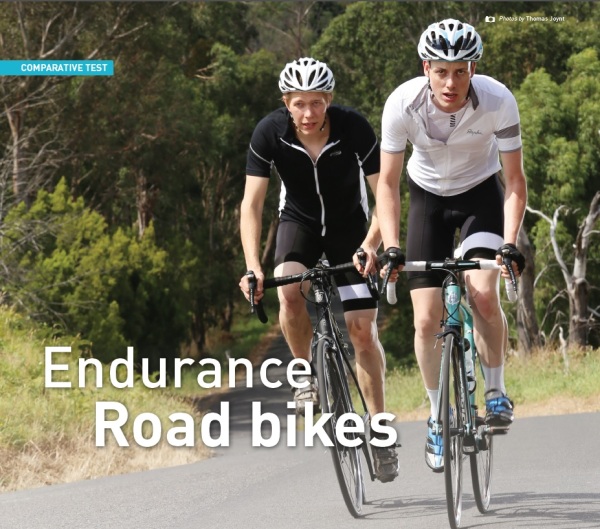
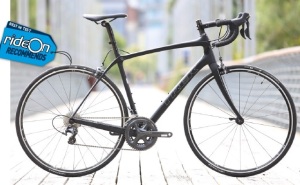
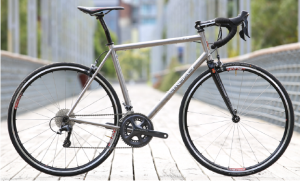
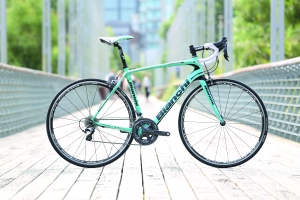

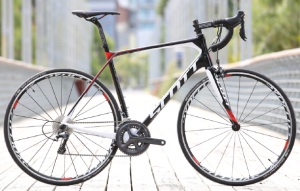
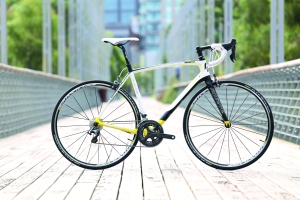
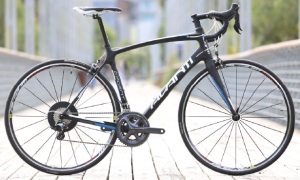
Nice review, but with a minimum RRP of $3199 this article perpetuates the myth that cycling is expensive and therefore inaccessible to the average person.
“perpetuates the myth that cycling is expensive and therefore inaccessible to the average person.”
Average bikes are available at average prices.
This is specifically a review of carbon endurance bikes. If you want a review of average bikes, there are plenty available.
Seems to be a review of frames and wheels sets. There is one non carbon frame in the mix, so material is not specific, just the group set. So, yes this is a review of mid to high range (my opinion) bikes. And it would be nice to have some entry level bikes reviewed (in another article), and dare I say even compared to the better specked ones for a ‘practical’ comparison.
Jason, there is nothing in the article that specifies frame type. The only criterium that the author made with respect to the test was that they were to be all equipped with Ultegra 6800. I would have liked to see a broader range of prices too; as a scientist, I understand the need for limiting variables, but this does not mean that the author should have excluded other frame sets simply on the basis of ‘not commercially available in this configuration’. Get the manufacturers to set up the appropriate kits and base the ‘experiment’ on frame price.
Rode the Domane and it seemed mismatched front and rear. Rode the Defy and settled on it. Very balanced ride and the in-house parts were better than a lot of other kit fitted to ‘higher end bikes’. A lot more room for discounts on Giant it seems as well.
Ah- I was hoping you compared to the focus and evo… I have been comparing them and the trek to replace my recently deceased bike
Hi Catherine, we unfortunately had to skip a Focus for this test because we’d reviewed one of their bikes in our multi-bike cyclocross test a couple of issues earlier – we didn’t want to duplicate brands. If you’re referring to the Cannondale SuperSix Evo, that’s more of a race-geometry; a closer match from their range would be the Synapse. Hope you find the perfect bike for you!
one not tested here but has made a re-birth is the Cannondale Synapse Carbon 3 Ultegra. Deciding between it and the Trek Domane 5.2. Test rode a Domane today – very nice, the back end is very supple
From all accounts, the new Synapse is awesome. We tried for several months to get one for this test, but unfortunately the stars didn’t align. Good luck with the search, with any of these bikes you can’t go far wrong!
Unfortunately the Synapse can’t be had in Perth so to expand the search I added the Defy… and it won! The Domane was great, but compared to the Defy, for me, my age, size, level of flexibility won hands down.
Glad you found the bike you were after – the Defy is a very solid choice. I hope you have a happy life together!
What about the Specialised Roubaix? That’s promoted as a pure endurance bike and with the zertz soaks up road vibrations?
Hey Greg,
There are two main reasons we didn’t include the Specialized Roubaix in this test:
1. It’s not available in Australia with a complete Ultegra 6800 groupset (the two Ultegra models swap the crank out for FSA), and therefore would have had a slightly different spec to all the other bikes and undermined the direct side-by-side comparison we aimed for with our testing rationale for this one.
2. We try to look at a broad spread of brands and reviewed a Specialized Crux in our last major comparative test (Cyclocross bikes, Oct/Nov 2013) and another endurance-geometry Specialized (the Secteur Expert Disc) within the last 18 months.
It looks like it’s well worth a look, but didn’t fit in here for these reasons.
A very narrow view of what an endurance bike is. These are lovely, fast, day-riders For real endurance (PBP and the like) you would do well to consider 650B configurations (or even a fast recumbent). COme and see what Audax riders ride.
I’d love to hear more about what Audax riders ride
I do a lot of Audax 200-600km rides and very impressed by the Colnago ACE
Good review thank you. While looking for a high-end carbon race bike I stumbled across the DogmaK (formerly the Kohb) which was on a clearance sale from Port Mel. Cycles. Have to say that choosing an endurance/comfort bike over a flat-out racer was a great move for me – the infinitesimal loss in potential speed certainly worth the increased comfort, endurance and enjoyment for the longer rides I favour. I suspect over 95% of mamils on racers would be better off on endurance bikes if their egos could get over it – seems the manufacturers have cottoned on to this and looks like range of choice and slick marketing is expanding in response.
On ya Greg, the Specialised Roubaix is the best touring bike of bunch. I can ride this hard all day, long after my riding buddies are too sore to continue. These reviews should be based on the best bike for the job, not which brand you have not mentioned in the last review!
When can we expect a similar review of endurance bikes under $2000? It’s nice to see what what some can afford, now for the rest of us!
Are you up to the challenge RideOn? Find and review 7 endurance road bikes for $2000 or less.
I’ll second that, would like to know how my Cannondale CAAD 8 Tiagra 10spd stacks up.
I find it a great bike for commuting and day rides, bagged one for under $1000. Only change I’d make would be a lighter wheelset – everything else just works, is comfortable and gets me around quicker than most guys on $5000 carbon!
And what of the BMC Gran Fondo line?
Yes, no mention of bikes below $3,000 for a full comparison. My personal opinion, you won’t find a better value bike than a Reid Falco Elite (http://www.reidcycles.com.au/2013-reid-falco-elite-road-bike.html#.U3MRYa2SyRM) now retailing for a crazy $899 with a $200 voucher to spend on anything in store. With full Shimano 105 throughout it is anything but average. Sure, spend the extra $2-3k on a branded bike and get some cafe respect, or alternatively, keep that money in your savings account and earn your respect on the road.
Ps. My endurance ride was on a Reid Osprey cycling around Kosciuszko in 322km loop starting and finishing in Jindabyne. Time taken 14 hours 32 minutes (http://www.strava.com/activities/103066600). Aluminium frame, Shimano 2300 groupset, cost $450… nothing average about that!!!
Anyone know about – or try – Volagi? Heard good things about the bike. Comparison to Domane? This model – http://www.volagi.com/bikes/liscio-disc-road-bike/
Hi Dave, we’ll have a test of the Volagi Liscio coming out in our October/November edition.
If I were not in California, I’d love to bike in Perth and a dozen other very beautiful places I’ve visited in Australia!
Just bought a Scott Solace 20 over the weekend, what a fantastic bike. Bikes evaluated: Scott Solace, Scott Speedster, Specialized Roubaix, Cannondale CAAD10, FELT, Fuji Roubaix, Fuji Altimera, Fuji Gran Fondo.
Rode all versions with both Shimano Ultegra and 105 components.
The 105 bikes were great, but bought Ultegra just for the cool factor and plus boss gave me a great bonus, so I had the cash. :7)
I read a review that said the Scott Solace 20 just climbs like a goat. Spot on. The bike just wants to go! The Specialized Roubaix was very smooth and easy, but too easy going for me. The Solace is so terrific at shedding road vibration, yet keeping more of the excitement of a race bike. The Specialized Roubaix was numb by comparison. Cannondale was great too, but the fit was not quite for me. I’m 2 meters tall (6′) with 81.28cm inseam (32″). BTW, i’m a 56cm frame size.
There is always a sense of the enjoyment, rhythm, vibe or chemistry a bike gives a rider which these reviews have a difficult time conveying. The character of the bike is difficult to sometimes quantify.
The Scott Solace 20 (Ultegra) & 30 (105) both make me smile and gave a true sense of joy across all types to road surfaces.
Happy Biking!
Nordic Dave
Nordic Dave,… what did you think of the Fuji Gran Fondo? Did you ride the 2.0 or 2.1? I’m looking closely at this category and would really like to hear your thoughts/impressions. With these 2 Fuji’s you seem to get a lot more bang for your buck. Your thoughts?
I have just put my name on a Merida ride 7000 . Now after reading your comparisons I am wondering if I have done the right thing . do you have any thoughts on this bike.
Colin
Did you end up purchasing the 7000? If so is it any good? I am thinking of getting on
Mine is nearly a year old now and has a couple of thousand K’s on it but my Domane 5.2 has been awesome. I test rode a few in the ‘endurance’ category including the Giant, Specialized, Focus and even the Scott. As the article alluded to though, i couldnt get over the ability of the Isospeed to take the edge off potholes, manhole covers, cracks in the road etc. I just finished ‘Around the Bay’ in Melbourne last weekend and the only aches and pains were in the muscles of my legs!
Top that off with the fact I’m not trading off weight/speed to get that (not for me anyway) it was a no-brainer, love my Domane.
Hi, I’m currently looking at a new bike that is full carbon and has the Ultegra. I’ve looked at the Specialised Ruby Elite and now considering either a Giant or Trek. It’s all so confusing because I’m actually new to the latest equipment and feel overwhelmed. I’m a female 54cm, so any tips that would be awesome. The Giant appears to be the cheapest, then the Specialised, then the Trek…thanks in advance for any help, cheers, Lisa
After reading this and other reviews, I bought a Lynskey 265 after a test ride. I was delighted to find that I picked up some speed on my usual 18 mile route over the Roubaix Sport that I had upgraded with Dura Ace derailleurs and Reynold Carbon wheels. The Lynskey feels like it just wants to go fast. And smooth. I did a couple of 50 mile rides on it, and those worked out very well.
What about the Canyon Endurace?
By all accounts a great bike, but at the time the article was written they were unavailable in Australia. Canyon has just become available here in the past couple of weeks, and we hope to review one in the future.
For those wanting to spend less than $2-$3k, consider aluminium models such as the Cannondale Synapse Tiagra/105 or the Canyon Endurace AL 6.0/7.0. The Canyon 7.0 matches a excellent aluminium frameset with Ultegra 6800 components for a smidge over $2000. For those like me that don’t race and like hitting cycling trails that may not be perfectly smooth, the Canyon and Cannondale are great. Also, pop 28mm Continental GP4000S II’s on it. All the bike you could ever need for recreational purposes. There’s always a “want” for more bike hehe…..
Good advice, David, especially on the 28mm tyre front.
Since this article, we published the following – https://rideonmagazine.com.au/reasonably-priced-roadies/ – a comparative review of five road bikes <$2000, including a review of the Cannondale Synapse 105. The market's come a way since then, and I expect for this season you'll start seeing hydraulic disc brakes around that pricepoint.
Would this mean that a Lapierre Sensium 400 is between a race bike and endurance bike? Further, can we have some insight on the seat and seat post that you changed to enhance the ride? Cheers
Hi Shawn,
Yes, getting that way. The stack of the Sensium was the second lowest of the bikes in the test, with only the Bianchi giving a racier geometry.
Note that since this article was published the Sensium, at least in Australia, has largely been superseded by the Pulsium.
Stretching my memory a bit now, but I believe I changed the seatpost out for an Easton EC90SL and the saddle for a Specialized Romin. Seats are a personal thing and the Selle Italia may work for some, but for me it was uncomfortable and was certainly pretty heavy. The carbon post helped soften the back end of the bike.
Hope this helps!
Hi All,. 2 years ago I was helping a friend get into cycling and we went shopping. I was saving up for my Italian dream bike but ended up walking out of the Avanti shop with the cadent. 2700 NZD for a full carbon, full ultegra bike…! if you own a range rover you wont be interested in this brand but don’t write it off. its a great looking bike, is awesome over long distance, stable at speed.. I am thinking of upgrading the wheels to an aero wheel to assist my infant iron man career but there’s no need really. i’m 106kg and have no issues with wheels or bike- I ride long road rides 150km+ with some clip on aero bars, and do my best in the hills around Christchurch. it goes fast, stops well, and I cant feel any flex. its done 90kmh + down the hills and is stable. if you are a keen cyclist on a budget then you would be silly not to test one. if it had different stickers you’d be happy to pay twice as much! it does what it says it will and doesn’t break the bank. you always want a nicer bike but im pretty happy with this one for now! cheers.